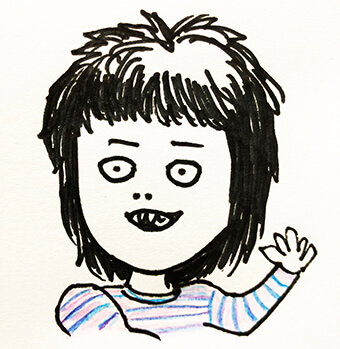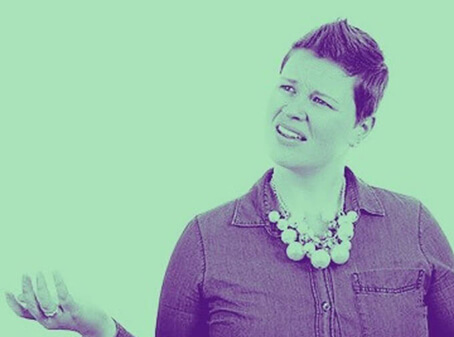Hi! It’s konkaz (@konkazuk) here.
“Kankei-Daimeishi” (relative pronoun) sounds a bit stiff, doesn’t it?
Lookng at its spelling makes you feel like avoiding or leaving it for later…

You’ve finally decided to work on it, and then somehow you have opened up a tin of beer, and have been watching YouTube channels… and after that you look like are finally going to do it , but you won’t… You have found yourself under the duvet…. Oi!
You will never make it! w
If you don’t start at some point, it will stay ambiguous, and also you will remain uncomfortable.
Why don’t you spare some of your time right now and give it a try while you have enough of cells alive in your brain?
Anyway, we are going to have a look at the usage of “that” and “which”, which I guess is one of the grayest areas of relative pronoun.
I have summarised it as simple as possible, so that you can read through within 5 mins. So, why don’t you get this area sorted and make yourself feel better?
What is a relative pronoun?

I guess those who have been studying English for some time know what a relative pronoun is, but let me briefly explain what it is here, anyway…
One of the main characteristics of English language that differentiates from Japanese is that when it comes to constructing a sentence, an essential independent clause comes first, just like…
“That is the dog” or “I am wearing a pair of socks”
…and then, explanatory clause such as…
“The dog stole my chikuwa” or “My socks are full of holes”
is to be added generally…
And the ones that play a roll of sticking two clauses together (ex. “that”, “which”, “who” and so on) is called “relative pronoun”.
Leave “which” aside and focus on “that” for now!!!

First of all, in a typical explanation for the difference between “that” and “which”, it is often said…
Relative pronoun “that” can be applied to modify “person/people” in addition to “things” and “matters”, while “which” can be applied only to modify “things” and “matters”.
However, don’t you think the fact that the case with “person/people” [who] is only included in order to explain the characteristics of pronoun “which” and “that” just makes things complicated to learn?
In a sense, it’s like we are being told to learn this “exception”, which is to substitute “that” for “person/people” [who], as an individual section.
I don’t like this…

The problem is that how this matter is explained generally lures you to think with one way, which is like… in which case we can use “that” instead of using “who” and “which”?
In fact, this should be looked at the other way round.
Essentially, you can apply “that” to anything, and this “that” can be replaced with “who” if it modifies person/people, or with “which” if it modifies things/matters, or with “when” if it modifies time.
Example 1.
The guy that robbed the bank has been arrested.
👉 The guy who robbed the bank has been arrested.
Example 2.
Remind me the exact time that I need to wake you up.
👉 Remind me the exact time when I need to wake you up.
Example 3.
I’ve got a bicycle that doesn’t have any wheels.
👉 I’ve got a bicycle which doesn’t have any wheels.
Therefore, let’s keep in mind that “that” is basically a versatile relative pronoun and is the 1st option to be considered, hence…
It’s not that “Which relative pronoun can be replaced with “that”?”, but it’s more like… “What can you replace “that” with?”
Can “that” be replaced with “which”?

So, at the end of the day…
It’s not substituting “that” for “which”, but it’s whether you can substitute “which” for “that” or not.

It might sound puzzling, however, if you look at the matter from English-speaking point of view, isn’t that actually a relief because that means you can apply “that” most of the time?
In conclusion, you can replace “that” that modifies “things/matters” in a 1st clause with “which” almost most of the time.
In the case where you can use both “that” and “which”…

Structurally, it is one sentence consisted of two (or possibly more) clauses that are being connected by the usage of relative pronoun, isn’t it?
And if the 2nd clause’s information that explains the main clause is essential for the whole sentence to make sense, both “that” and “which” are applicable. (However, “that” is usually applied in this case.)
For those who have found the explanation slightly confusing, the examples below should make the matter clear for you. 👇
For example, when you are going to pick somebody up with a car, you will tell the person the colour of it so that he/she can recognise it easily.
“I’ll come and pick you up with my car that has got a colour of silver.”
👉 “I’ll come and pick you up with my car which has got a colour of silver.”
Imagine the place, where the person is waiting, is busy with lots of cars coming in and out. And in this context, the “colour of the car” is an essential information to be included in the sentence for the person to distinguish the speaker’s car from the others.
Another situation could be…
Your dog is playing in the park with several dogs of other owners’, and you are asked to tell which one of them belongs to you. And you would say…
“The one that has got dotty patterns is my dog.“
👉 ”The one which has got dotty patterns is my dog.”
Again, in this case, you can’t simply tell which dog is yours without pointing out dog’s features (its dotty patterns).
As you have seen in these examples, when the secondary clause has an essential information for its sentence to make sense, both “that” or “which” can be applied to modify the thing/matter in the main clause.
Incidentally, this secondary clause that includes an indispensable information is often called “defining clause” since it defines the sentence.
In the case where you can only apply “which”

Yes, there is such an exception where only “which” can be applicable, but not to worrybecause it is quite straightforward to figure out when to use it.
Please check the following examples that are in the same scenario…
“I’ll come and pick you up with my silver car, which colour used to be brown.
“The one with dotty patterns, which he didn’t have when he was born, is my dog.”
These two clauses in each sentence “which colour used to be brown”and “which he didn’t have when he was born”are just additional informations that are not essential for the person to recognise the speaker’s car or dog.
You can only apply “which” if you are adding this kind of “non-defining clause” and notably it is often set off by commas.
Let’s have a look at one more example…
”This type of printer, which I bought eight years ago and am still using, is no longer produced by the maker.”
We can see that the clause that is written in bold face is just an additional information. It is totally disposable, isn’t it?

Anyway, regarding the usage of relative pronoun “which” and “that”…
ultimately, “which” is only used in case of adding “non-defining clause” to modify “things/matters” in the main clause, and other than this circumstance, “that” is preferred to be applied.
It seems that “that” is applied to most of the cases, especially in everyday conversations.
Summary

- “that” is basically an all-rounder of relative pronouns, therefore it should picked as the first option to apply.
- Think what can be substituted for “that” rather than replacing other relative pronouns with “that”.
- You can apply either “which” or “that” for modifying the matters/things in the main clause, if the information in the secondary clause is essential to define the whole sentence, however “that” is generally chosen out of the two, other than in the case of adding non-defining clause where “which” can be only applicable.
- Which is only applicable if the secondary clause, which is to modify the matters/things in the main clause, is just an additional information and doesn’t play a role of defining the whole the sentence, and in this case, the secondary clause is set off by commas.
There are some cases where you can only apply “that”, which are…
- When the 1st (main) clause includes superlative form of an adjective.
- When the 1st (main) clause includes an adjective or pronoun that has got a meaning of “all” such as “every”, “all”, “no”, “everything” and so on.
- When the subject of the 1st (main) clause is “animal + person”
however, at the end of the day, “which” is rarely used other than in the case the secondary clause is only an additional information and is usually set off by commas.
Therefore, considering the fact that “that” is being used most of the time during the everyday conversation, if you make a habit of applying “that” normally, there is no need to be worried about thinking when you can apply only “that”, to be honest.
So, this is it for “When to apply relative pronoun “that” and “when”.
I hope you have found this article helpful.
konkaz

